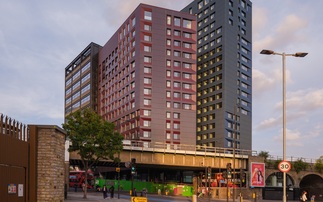Terri Wills of the World Green Building Council argues green buildings are about to have a major impact at COP21
Is it a bird? Is it a plane? No. But it's not superman either. COP21 in Paris is set to have a more unlikely hero: green building.
If you think that's a rather bold way to begin a blog, the facts speak for themselves. Buildings - and mostly the world's old, energy guzzling and inefficient ones - currently account for around one third of global greenhouse gas emissions. They also place pressure on the world's valuable resources - an astounding 40 per cent of global resources and 25 per cent of global water are used in buildings according to the United Nations Environment Programme.
But by the same token, green buildings - ones which have limited, zero, or, in some cases, positive impacts on the environment - can relieve this burden on resources and significantly reduce emissions.
84 gigatonnes of CO2. That's the figure that the World Green Building Council and the International Energy Agency have projected must be reduced by 2050 if the sector is to play its part in limiting global warming to 2 degrees. To put that into context, it's the equivalent of not building 22,000 coal powered power stations by the middle of this century.
It's an enormous challenge, but this large-scale reduction of emissions is absolutely possible. It will take transformative action and collaboration, something that will be shown on an unprecedented scale tomorrow.
On Thursday, politicians, business leaders and NGOs will meet in Paris for the official COP21 Buildings Day - the first of its kind at any UN climate change negotiations - to set out how the buildings and construction sector can play their part in steering the world from the brink of dangerous global warming.
Initiated by the WorldGBC, France and other partners, it is being championed by Ségolène Royal, France's Minister of Ecology and former presidential candidate. Ms Royal, together with the likes of the global CEO of French product manufacturer Saint-Gobain, the Deputy Assistant Secretary for International Climate within the Obama Administration and the Mayor of Sydney, will make the case to countries that green building is one of the most cost-effective solutions to climate change.
They will tell the world how green buildings create major economic opportunities, such as a projected 3.3 million US jobs by 2018 - more than one third of the entire US construction sector.
They will highlight how green buildings are better for people's health, wellbeing and productivity - such as the estimated productivity improvements of up to 11 per cent from green features such as improved indoor air quality.
But perhaps most importantly, they will show how green buildings represent one of the best ways for countries to meet their Intended Nationally Determined Contributions (INDCs). At least 40 countries have specifically referred to the buildings sector as one of the means by which they can achieve their INDCs. And Buildings Day will also see the launch of a new alliance of more than 100 countries, cities and organisations - including WorldGBC and its network of 74 Green Building Councils - that will publicly commit to supporting countries to meet these targets through green building.
National Green Building Councils are also playing their part within their own countries - driving transformative action on the ground in a variety of ways. The Indian Green Building Council has, for example, committed to facilitate almost 1 million square metres of registered green building and to help the Indian Government meet its INDC through green building policies. In Australia, Canada and South Africa, the Green Building Councils have committed to introduce Net Zero certification schemes for buildings with no net annual carbon emissions, which will be critical in highlighting building assets that are at a reduced risk of exposure to the effects of our changing climate.
So when you look to the sky for something that might solve our climate crisis, you might not see a flickering cape or bat-shaped sign, but you will see a green building. With the potential to reduce global emissions by up to a third, that's an achievement worthy of a superhero.
Terri Wills is chief executive of the World Green Building Council
This article is part of BusinessGreen's Road to Paris hub, hosted in association with PwC.







